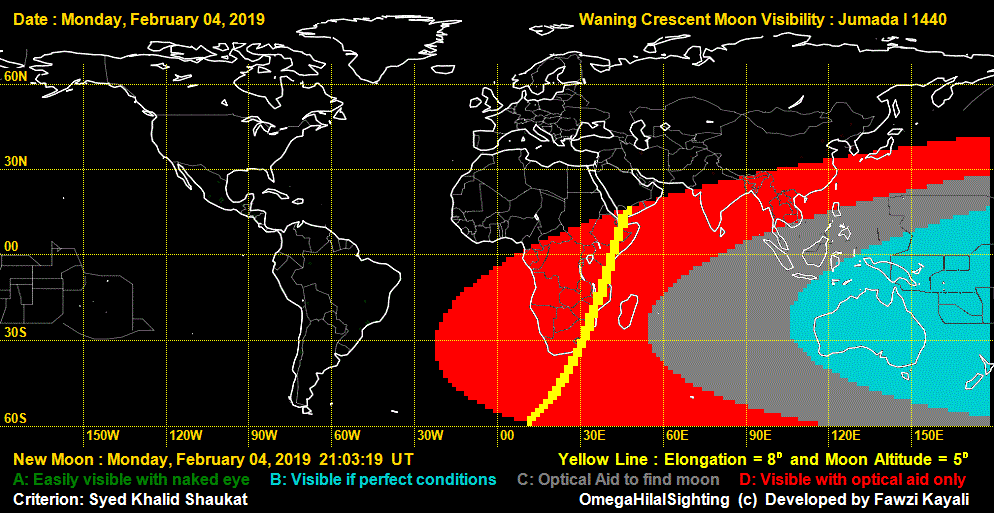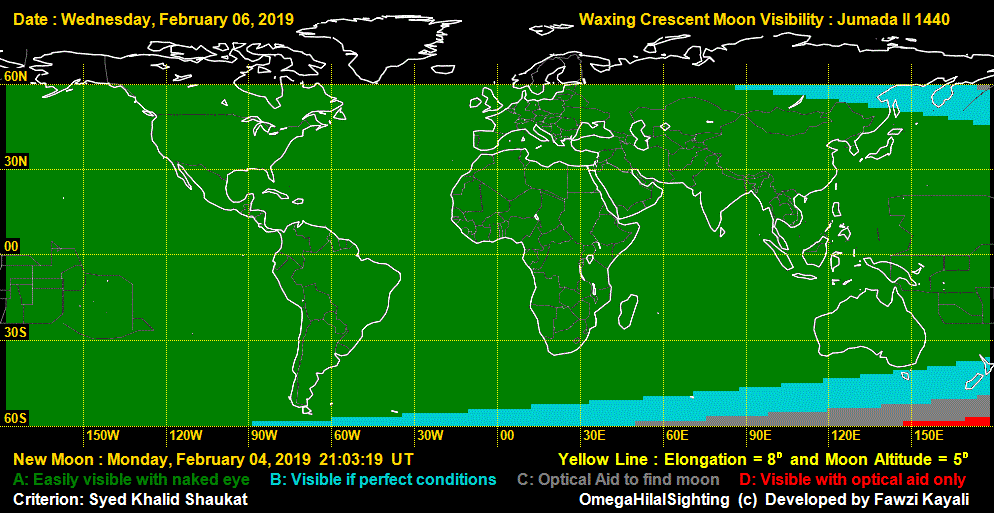MAKKAH – The Islamic World is about to celebrate the beginning of the new Hijri month Jumada Al Thani, the sixth month of the Hijri calendar 1440.
According to the National Research Institute of Astronomy & Geophysics (NRIAG) in Helwan, Egypt, the Waning (old) Crescent Moon which marks the end of Jumada Al Awwal 1440 AH was observed yesterday on February 3.
In fact, the Astronomical New Moon (conjunction) will take place today on February 4 at 21:03 UT. However, there will be no chance of sighting the moon anywhere in the world as seen in this map:

On the contrary, tomorrow on February 5, there will be a small chance of sighting the new month’s crescent in the Americas. In addition, on February 6, the moon can be seen in the whole world according to these Moonsighting.com maps:


The crescent must be obvious after the sun sets. Otherwise, if the observer noticed the crescent with the naked eye before sunset –almost impossible- he wouldn’t count that as the crescent of the first day of a lunar month.
If the observer sees the crescent, this automatically means that new Hijri month has started, while if the observer doesn’t see the crescent this means that the next day will be the 30th and last day of the current month.
Concept of Hijri Calendar
The Hijri Calendar is a lunar one, meaning that months begin when the first crescent of a new moon is sighted. And since this type of calendars is 11 to 12 days shorter than the solar year, Jumada Al Thani and all Hijri months migrate throughout the seasons.
As observed from earth, the lunar phase is the shape of the luminous portion of the moon. Moon phases change as the Moon orbits the Earth, according to the changing positions of the Moon and Sun.
The eight principal and intermediate phases which take place during a Hijri month are, in sequential order: New Moon, Waxing Crescent, First Quarter, Waxing Gibbous, Full Moon, Waning Gibbous, Last Quarter, and Waning Crescent.
The lunar terminator is the boundary between the luminous and dark hemispheres. Each of the four “intermediate” lunar phases is roughly seven days. Yet, this varies slightly due to the elliptical shape of the Moon’s orbit.
The moon travels the same path all year round. When we see it in the east, we see it traveling towards the west. Any country sees the moon within a 24-hour period once spotted by its eastern neighbor.
